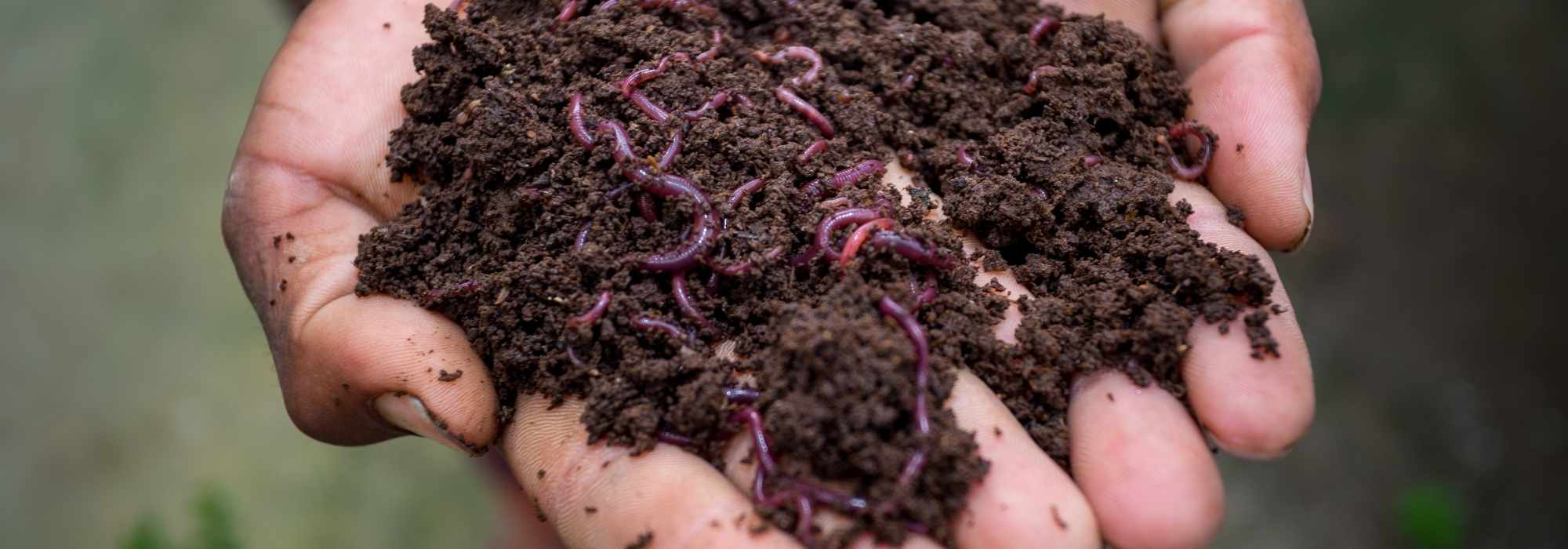
Vermicompost, midrib practical
Four key questions and answers
Contents
Larousse defines vermicomposting as a “method of composting using earthworms to decompose organic waste“.[1] Each day, red manure worms (Eisenia foetida) and Californian worms (Eisenia andreï) can eat their weight in food – whether plant or animal residues. Their castings create a 100% natural fertiliser, rich in humus, enzymes, plant growth hormones and bacterial flora. In accordance with EC Regulation 834/2007, it can be used in organic farming to feed flowers, plants, lawn and vegetable patch.
Discover, in a few extremely practical Q&As, why having a vermicomposter in your garden or vegetable patch makes so much sense…
[1] Larousse : https://www.larousse.fr/dictionnaires/francais/lombricompostage/10910906
How to use a wormery on a daily basis?
Waste intended for vermicomposting must be cut into small pieces (about 2 centimetres) so it decomposes faster. Although not strictly necessary, this precaution improves process efficiency.
Ideally, we recommend storing this waste in a small lidded bin indoors. This practice provides worms with slightly rotted food in which micro-organisms have already developed and avoids multiplying trips to the vermicomposter for every peel collected.
Depending on needs, this intermediate container is emptied 1 to 3 times a week, then sprinkled with a fine litter layer. Feel free to vary deposit locations.
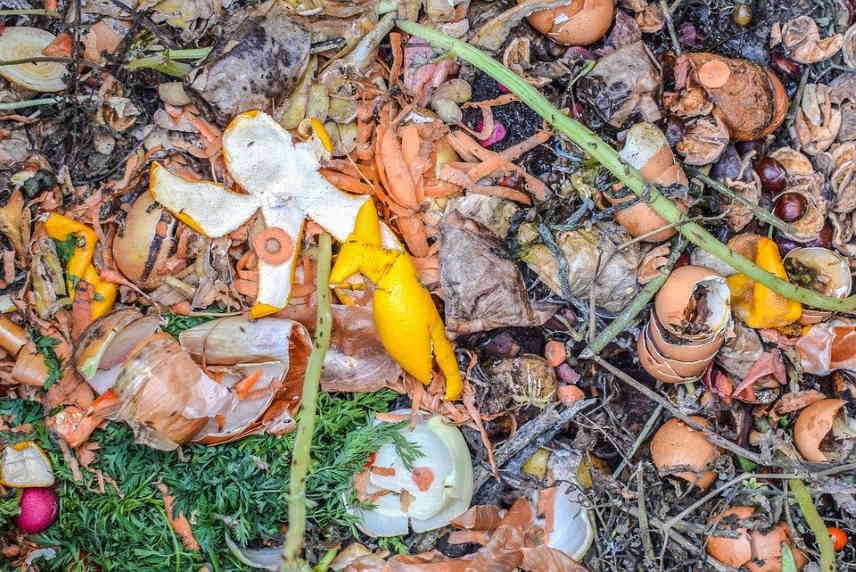
Feed your vermicompost with kitchen green waste, cutting it into small pieces to facilitate decomposition process
What waste to put in?
The vermicomposter can break down most of your spoiled or out-of-date food, cheese rinds, eggshells, but also kitchen roll and used tissues, coffee grounds, tea remains as well as dead leaves, wilted flowers and dried plants.
However, do not add garlic, onion, citrus trees, dairy products, meat, oily products, nor ashes, fabric or soil.
How to monitor whether it is working properly?
In vermicomposting, everything is a question of balance. Therefore, a number of parameters must be monitored:
- Carbon / nitrogen ratio
Worms need a good balance between carbon-rich materials (dead leaves, cardboard, paper…) and nitrogen-rich materials (fruit and vegetable peelings, grass clippings…). In practice, there should be one part nitrogen-rich material to one part carbon-rich material (50% – 50%).
- Acidity
The decomposition of organic matter increases the overall acidity: crushed eggshells should be added regularly to compensate for this effect. Note that pH must remain neutral, between 6.5 and 8.
- Moisture
Normally, waste moisture alone is enough to supply the vermicomposter with water to achieve a percentage between 75% and 85%. Otherwise, simply spray a little water on it, without excess so as not to drown the worms.
Does vermicomposting have a strong odour?
Vermicomposting suffers from several misconceptions, among which are these supposed bad odours. However, these rarely occur, only when the system is not well balanced: adding too much food relative to the number of worms can cause this problem, but simply stop feeding for a few days, aerate the bin by mixing it and add carbon (cardboard).
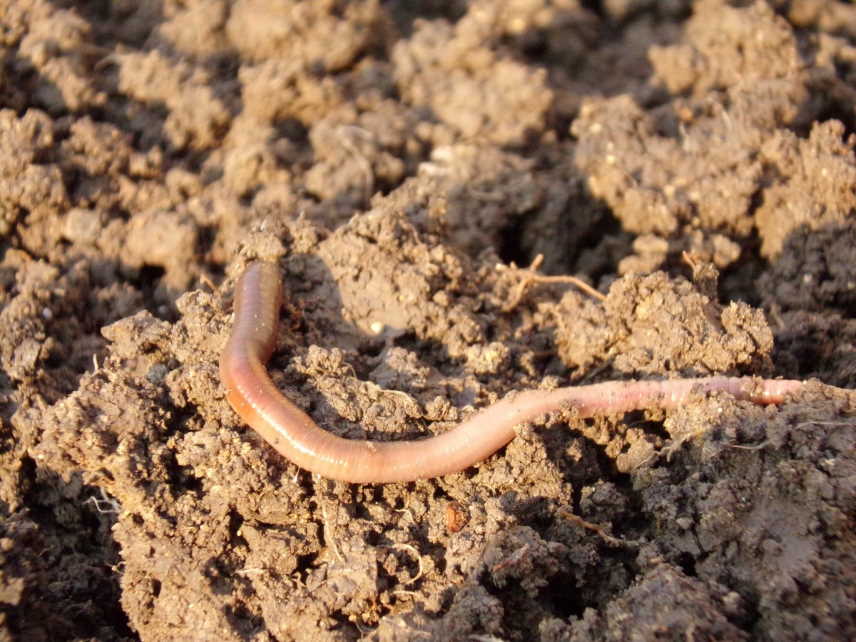
Worms need a balanced supply of components to work well
How does a wormery work?
Visually, the worm composter is composed of several nival zones. From top to bottom, there are:
- 1st layer : users’ waste, cut into small pieces.
- 2nd layer : vermicompost in the making.
- 3rd layer : compost ready to use.
- 4th layer : liquid fertiliser, called “percolate”, “compost tea”, “worm tea” or “vermitea”.
After 3 to 6 months of vermicomposting, the 3rd layer can be used to feed plantings, flowers or vegetable garden: it appears as a granular substance, dark brown in colour. The more advanced the decomposition, the richer the product obtained.
Percolate, meanwhile, is collected at base of unit: used as liquid fertiliser, it must be diluted – at ratio of one volume of percolate to 10 volumes of water. Then simply add it to irrigation water or spray it directly, occasionally, onto leaves of plants – whether in growth phase or in flowering. In undiluted form, it can be used as weedkiller.
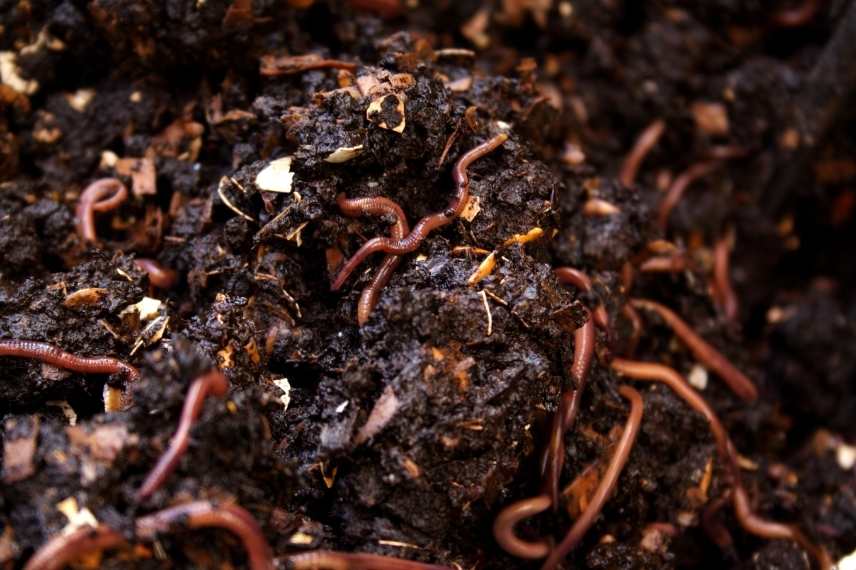
Compost is almost ripe for use in garden or vegetable garden
How to use vermicompost for vegetable garden and garden?
In the vegetable garden, vermicompost (or vermicompost for Belgians and Quebecers) can be used to cover sowings to encourage germination thanks to its ability to retain water and to warm soils. In undiluted form, it can be used when planting strawberries or tomato plants. Finally, for transplanting vegetables, add a handful to bottom of each hole.
In an ornamental garden, plantings benefit from 1.5 to 3 kg of vermicompost mixed with soil per hole. For flowers, use no more than 1 kg per square metre. Finally, to accompany sowing of a short grass meadow, recommended amount is 1 to 2 kg per square metre, mixed on surface.
How do I start a wormery?
Once installed in suitable location (temperature between 10 and 25 °C, sheltered from rain and light, in a well-ventilated, quiet space), the vermicomposter needs several elements to function:
- Worms: ideally have manure worms, which feed on decomposing matter, and Californian worms, which prefer fresh organic matter. You need double the quantity of your daily waste input. For example, 500 grams of worms for 250 grams of waste.
- The litter layer forms worms’ living area: in layer 20 to 25 cm thick, place carbon-rich materials (shredded newspaper, toilet paper, shredded egg box…), a 4 cm layer of potting compost, a handful of sand and some water to moisten without soaking. On this base, add worms and wait for them to burrow in before adding some organic matter and more litter layer.
After this set-up, within about 2 weeks, the vermicomposter will be ready to use.
How to recover vermicompost without worms?
To avoid drastically reducing vermicomposter population each time you harvest vermicompost, there is a very simple trick to put in place: attract worms with food! Concretely, push contents into one half of the unit then set up a new litter layer in the cleared space, adding food to decompose. Gradually, worms will migrate to it. Allow about 3 weeks before harvesting vermicompost set aside.
Finally, for those who don’t want the hassle, discover our vermicompost Pur Vert in our shop, a natural organic amendment suitable for all garden plants, for vegetable patch and for repotting and care of potted plants.
- Subscribe!
- Contents
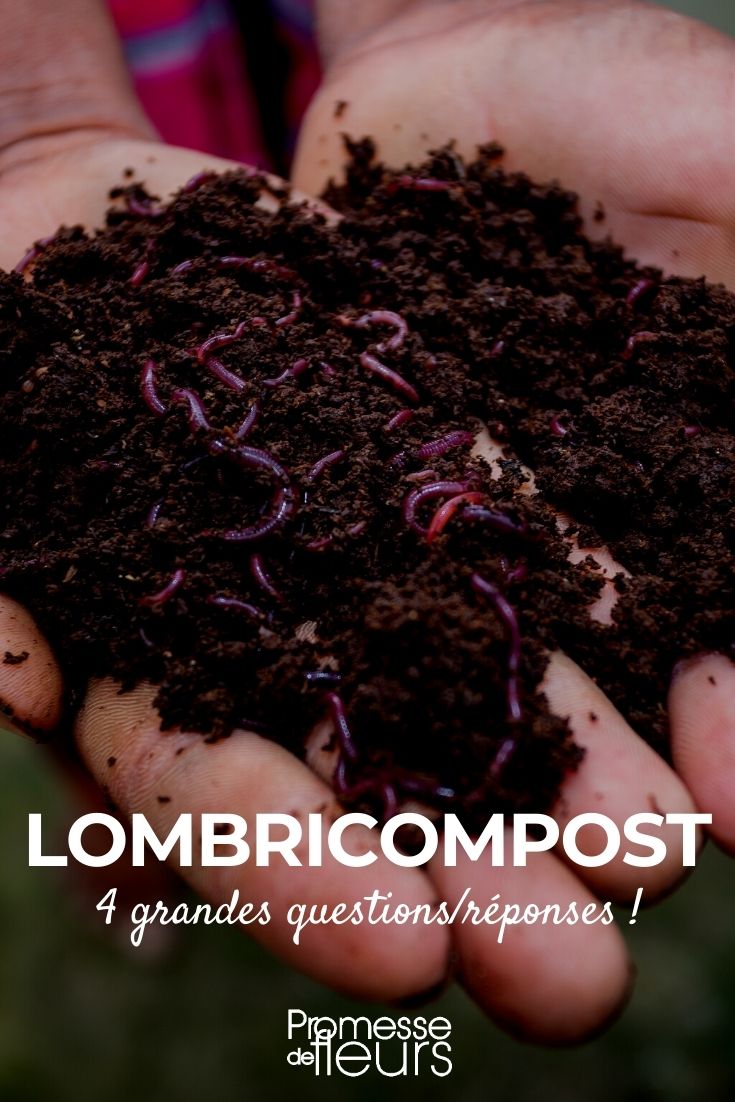































Comments